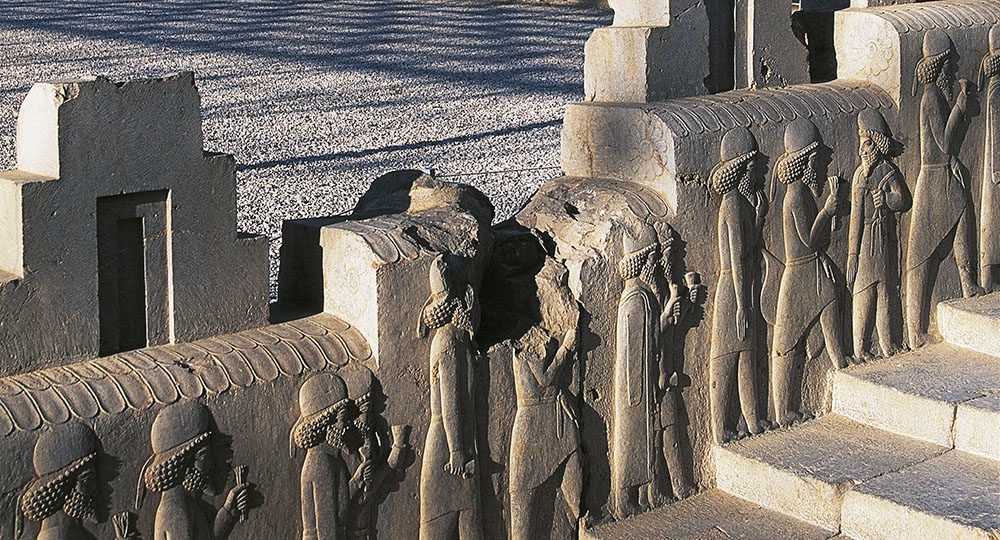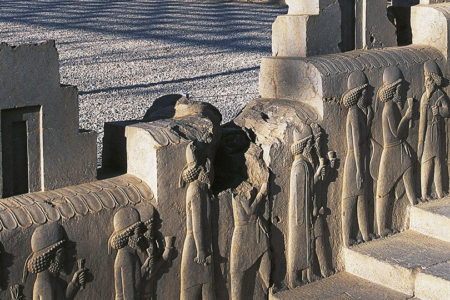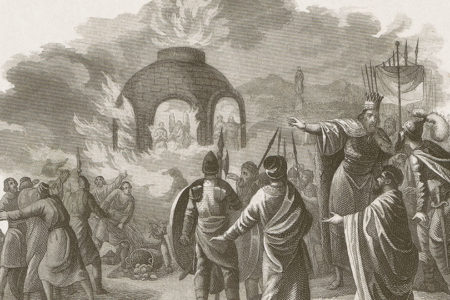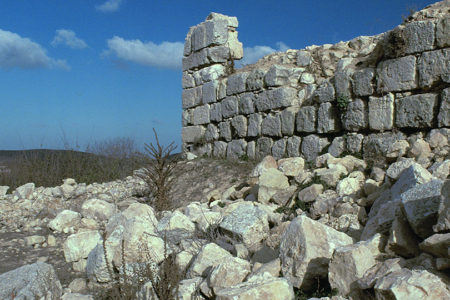The Kingdom and the Power
The prophet Daniel lived in tumultuous times. In a life that stretched to possibly 90 years, Daniel experienced the demise of Judah’s kingdom at the hands of Babylon and then the destruction of Babylon by the Medo-Persians. During this political upheaval, when the superpowers of the time faced off against each other, vying for control of the Ancient Near East, God revealed to Daniel that everything was under His control and was according to His plan for His people Israel and the coming of God’s Kingdom to Earth.
During the sixth and seventh centuries B.C., the kingdom of Judah was caught in a conflict between three great empires: Assyria, Babylon, and Medo-Persia. The Assyrian Empire, based in Nineveh, had ruled the Ancient Near East from the time of Tiglath-Pileser III in the mid eighth century B.C. This was the nation that had conquered Samaria and taken the northern kingdom of Israel captive in 722 B.C. By the end of the following century, Babylon was slowly encroaching on Assyria, sacking Nineveh in 612 B.C.
In 609, a coalition of Assyrian and Egyptian armies attempted to restrain the Babylonians at Carchemish. But by 605, under Nebuchadnezzar, Babylon proved victorious; and so Judah became subservient to the Babylonian Empire.
That year Nebuchadnezzar took Judean captives that included Daniel. He did so again in 597 after King Jehoiakim rebelled. Jehoiakim died in Babylon; his successor, Jehoiachin, was then taken prisoner (along with the prophet Ezekiel); and Zedekiah became king. Finally, in 586 B.C., after Zedekiah rebelled, King Nebuchadnezzar burned Jerusalem, destroyed the Temple, and exiled the rest of the Jewish nation. Since Babylon already controlled the northern kingdom of Israel, captured by Assyria, it now had total domination over world Jewry.
The Babylonian Empire, though glorious, was short-lived. Thirteen years after Nebuchadnezzar’s death, a coalition of Medes and Persians under Persian King Cyrus conquered Babylon by diverting the Euphrates River and storming into the city through the riverbed on October 29, 539 B.C. Cyrus then decreed that all the captive nations under Babylon could return home. So began the unprecedented Persian Empire that ruled from India to the Mediterranean Sea for more than 200 years.
Daniel thus lived during a time of tremendous political turmoil, with the Jewish nation subservient to these greater powers. The book of Daniel, however, teaches that the world is never out of God’s control and all nations are subject to Him.
The Book
Although the Christian Bible places Daniel with the Major Prophets, the Hebrew Bible puts it with the Writings.(See “Daniel or Denial?”) This may be because Daniel worked mainly as a Babylonian and then Persian government official, so the book was placed between Esther and Ezra/Nehemiah with other writings from the post-exilic times.
Daniel’s revelations spanned almost seven decades and specify the royal years when he received visions. The book is written in both Hebrew (1:1––2:4a; 8:1––12:13) and Aramaic (2:4b––7:28), the international language of the day, telling us that Daniel wrote to both Jews and Gentiles.
Daniel 1 functions as an introduction. It places Daniel as a Judean exile in Babylon and shows both his character and God’s blessing on him and his friends for their faithfulness. Chapters 2 through 7 are in Aramaic, meaning their message is primarily for the Gentile nations.
Chapters 2 and 7 reveal four Gentile kingdoms in two forms. In chapter 2 (Nebuchadnezzar’s dream), each of the four kingdoms is represented as a type of metal in an image of a man that is finally destroyed by the coming of God’s Kingdom. In chapter 7, the same four kingdoms are pictured as four types of beasts. Scripture identifies the first three kingdoms as Babylon (2:37), Medo-Persia (8:20), and Greece (v. 21), and the fourth is generally recognized as the Roman Empire––which fits historically.
In the same way, the 10 toes of the image in 2:41–43 correspond to the 10 horns of the fourth beast in 7:7, 24.(See “Times of the Gentiles” chart in “The Great World Kingdoms.”) The additional revelation in 7:8, 24 is that a little horn sprouts up among the 10 to blaspheme God. The Most High then judges that little horn through the Son of Man, and the kingdom is then given to the saints.
Chapters 3 and 6 correspond to each other in that they demonstrate God’s preservation of the faithful under these Gentile rulers. Chapter 3 is the famous story of Shadrach, Meshach and Abed-Nego and God’s protection of them in the furnace when they would not bow down to Nebuchadnezzar’s image.(See “Facing the Furnaces of Life,”.) In the same way, God protected an elderly Daniel (chap. 6) in the lions’ den when he continued to bow down to the true God in violation of the law of the Medes and Persians. Both accounts not only instruct God’s Chosen People to be faithful to Him while under Gentile rule, but they also instruct Gentile rulers as to who really is God.
This thrust then becomes the theme of chapters 4 and 5. Chapter 4 is King Nebuchadnezzar’s autobiographical description of his encounter with the Most High God. It is the story of Nebuchadnezzar’s pride and humbling through seven years of boanthropy, when he lived in humiliation as an animal in the field until he recognized that his kingdom and power came from God. (See “Every Knee Shall Bow.”)
Chapter 5 recounts King Belshazzar’s blasphemy and God’s response when Belshazzar used the holy vessels from the destroyed Jewish Temple in his drunken feast. (See “Belshazzar’s Bash,”) Both accounts warn Gentile rulers to recognize that their sovereignty over Israel comes from God. It is not theirs or that of their gods; and they should honor the Most High and His people, or they will be judged.
Chapters 8 through 12 consist of three visions, or revelations, written in Hebrew and dealing with Israel’s future under the four Gentile kingdoms. All three focus on Israel’s continued judgment or suffering at the hands of the Gentiles until God’s Kingdom comes. Chapter 8 is a vision revealed in 551 B.C. that deals with the oppression of Antiochus IV (Epiphanes), a Seleucid king from the Greek Empire, when he profaned the yet-future second Temple in Jerusalem in 167 B.C., thus sparking the Maccabean revolt. This king is also described in the vision of 11:21–35. (See “Antiochus and the Antichrist.”)
Chapter 9 is God’s response to Daniel’s prayer in 539–538 B.C. over Jeremiah’s prophecy that Jewish people would be in exile 70 years (Jer. 25:11–12; 29:10). Daniel understood that it was the time for the exile to be completed (609–539 B.C.).
God revealed to Daniel that 70 times seven years of further judgment was decreed for Jerusalem until all atonement had been made for Israel. At the end of 483 years the Messiah was to be “cut off” (Dan. 9:26), leaving one final “week” (seven-year period) of judgment before the end (vv. 24–27).
The final vision, recorded in chapters 10––12, was given in 536–535 B.C. and deals with the nation of Israel in the “latter days” (10:14). Chapter 11 envisions the conflicts between the Seleucids and the Ptolemies during the time of the Greek Empire, which culminated in Antiochus Epiphanes’ abomination of desolation in the Temple (11:31). (“See “Who’s Who in Daniel 11.”)
But Antiochus Epiphanes is pictured as but a type of a greater, future ruler: the Antichrist, who will exalt himself against God. The book ends with the establishment of God’s rule and the reward of resurrection for the saints.
The Message
The book of Daniel has a message for both Israel and the Gentile nations. For Israel, the message is to remain faithful to the one true God despite suffering under Gentile rule while awaiting God’s Messiah and Kingdom.
For Gentiles, the message is to recognize the God of Israel as the Most High God and acknowledge His plan for Israel and the world. God is to be recognized as sovereign; and honor and glory given to Him. As Nebuchadnezzar came to recognize, “His dominion is an everlasting dominion, and His kingdom is from generation to generation” (4:34).






